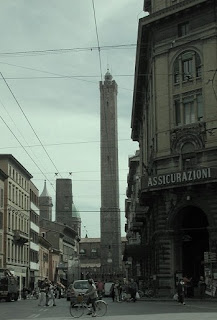Today, it would be a massive waste of time to start counting the number of skyscrapers in the world. But no matter the amount of skyscrapers in the world, it all began somewhere.
Skyscrapers look normal today, after all it’s ‘just a
skyscraper’. However, there was a time the skyscraper was an opportunity for
the eyes. There was a time a skyscraper was a marvel, a time it was plain
magic.
When did it all began? Building of skyscrapers began as far
back as the 19th century. And to say the least, there have been improvements
over the years on height and strength of skyscrapers across the world.
 |
| Home Insurance Building |
These developments were made possible after Sir Henry
Bessemer patented an affordable method of mass production of steel by blowing
oxygen through molten pig iron to remove impurities in 1855.
One of the major features that differentiate skyscrapers
from conventional constructions is that skyscrapers have framework from which
curtain walls are suspended instead of load-bearing walls.
The first steal frame skyscraper was the Home Insurance
Building in Chicago which was completed in 1884. It had ten storeys and a
height of 42m at the time. In this age, that building doesn’t even qualify to
be a skyscraper.
 |
| Asinelli Tower |
It must be noted however that taller buildings like the
Asinelli Tower in 12th century Bologna existed before the Home Insurance
building. But a Florentine law in 1251 decreed that all urban building be
immediately reduced to less than 26m. the Asinelli Tower was 97.2m in height.
The tallest construction in ancient times was the 146m Great
Pyramid of Giza in ancient Egypt which was built in the 26th century BC. It is
not inhabited by people so, it does not fit the specification.
The Home Insurance Building was later demolished in 1931 to
make way for the Field Building (now the LaSalle National Bank Building).
 |
| Empire State Building |
In 1931, one of the most popular skyscrapers, Empire State
Building was built. At 381m roof height (pinnacle height is 443m), it became
the world’s tallest building and held that title for 40 years before the first
World Trade Centre was built in 1972.
In two years’ time, the 442m Sears Tower (now Willis Tower)
in Chicago overtook the World Trade Centre in height. The Willis Tower stood as
the tallest building until the 452m Petronas Twins Towers in Kuala Lumpur,
Malaysia overtook it after 24 years in 1998.
Taipei 101 in Taiwan became the tallest building in the
world in 2004 with an height of 509m (pinnacle height). Presently, the tallest
building in the world is the Burj Khalifa in Dubai with a height of 828m.
Due to the height, elevators are important elements of
skyscrapers. In 1852, Elisha Otis introduced the safety elevator to allow
passengers’ movement to upper floors of buildings. The elevator has been
improved upon over the years.
 |
| Burj Khalifa |
Much money go into these projects and rapt attention is paid
to every detail of the building construction. To back this up, Taipei 101
endured and survived a typhoon in 2005, a year after its opening. Even while it
was in construction in 2002, it survived a 6.8 magnitude earthquake undamaged.
Skyscrapers are beauties to behold and even greater heights
are being proposed (greater than a kilometre) in the future like the Kingdom
Tower to be built in Jeddah, Saudi Arabia and Burj Mubarak Al Kabir in Kuwait.
It all started with the Home Insurance Building in Chicago.












Mehn , these buildings are really tall oo.
ReplyDeleteNicee structures